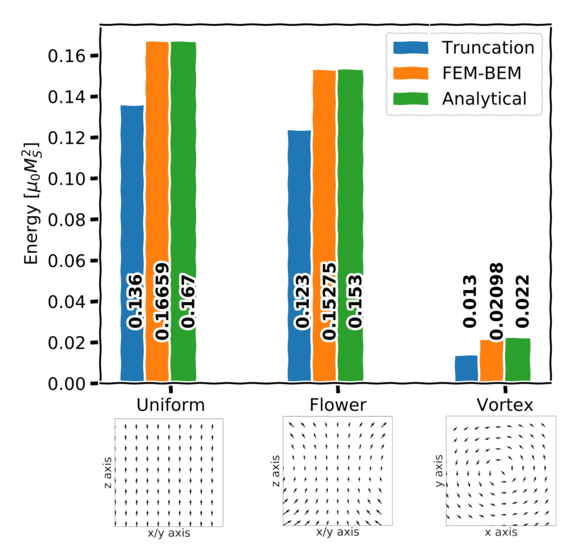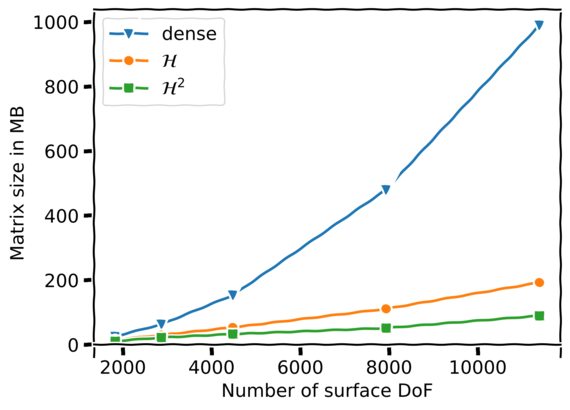 |
|
||||
BiographyJohannes Ender was born in 1988 in Hohenems, Austria. In 2013 he finished his Master’s studies at the University of Applied Sciences in Vorarlberg. After working in industry for three years he pursued the Master’s studies of Computational Science at the University of Vienna. In November 2018 he joined the Institute for Microelectronics where he started his PhD studies researching the simulation of non-volatile magnetic memory devices. |
|||||
Efficient Demagnetizing Field Calculation in Micromagnetic Simulations
Magnetoresistive random access memory devices have the potential to replace conventional semiconductor devices, which suffer from ever-increasing dynamic and stand-by power consumption. In order to design these spin-based devices, numerically demanding simulations have to be performed in order to calculate the magnetization dynamics of the ferromagnetic layers. Large-scale micromagnetic simulations using the finite element method (FEM) require special care, due to the effective field evaluations that have to be performed at every time step.
Out of the several contributions to the effective field, the demagnetizing field is computationally the most expensive. It describes the long-range dipole interaction of the magnetic moments. In an FEM discretization, calculating the demagnetizing field is reduced to solving the Poisson equation for a magnetic potential. As the potential decays slowly to zero at infinity, a large computational domain surrounding the magnetic material is needed in a pure FEM simulation in order to well-approximate this boundary condition. This is the so-called truncation approach. A hybrid approach, whereby FEM is coupled with the boundary element method (FEM-BEM), can be employed to restrict computation to the magnetic domain. Fig. 1 shows results for the calculation of the demagnetizing energy of a unit cube - a case often used to validate the correctness of the demagnetizing field calculation.
Simulations using the different methods and different initial magnetizations were performed on a mesh with the same resolution in the magnetic domain. One can see that the FEM-BEM method achieves significantly better accuracy than the truncation method. This is due to the fact that, in contrast to the truncation approach, it does not perform an approximation, but rather uses a boundary integral formalism to properly describe this "open boundary condition". In addition to these benefits of the FEM-BEM method, it comes at the cost of having to deal with dense matrices arising from the discretization of boundary operators, and matrix compression algorithms must be applied. Fig. 2 shows how so-called hierarchical matrix compression algorithms can drastically reduce the memory demands of the simulation.
Using the above-mentioned means, the demagnetizing field in a single magnetic layer, as well as multiple disjoint magnetic layers for uniform and non-uniform magnetization, is efficiently evaluated. Applying these techniques to standard micromagnetic problems, for which known values for the demagnetizing energy exist, demonstrates that the hybrid FEM-BEM approach is not only accurate but also highly computationally efficient.

Fig. 1: Comparison of the demagnetization energy for different magnetization states.

Fig. 2: Matrix size of the discretized boundary operator as a function of the number of surface degrees of freedom with and without compression.


